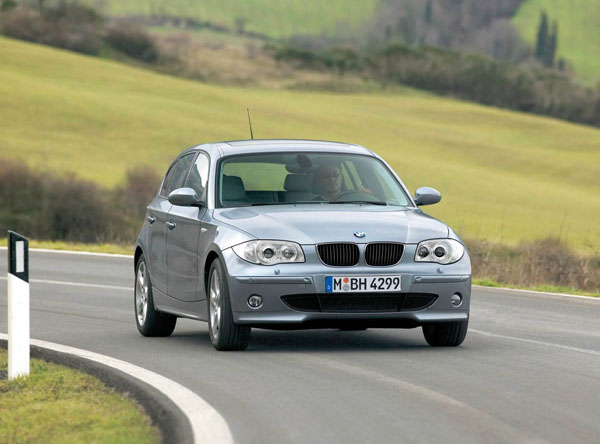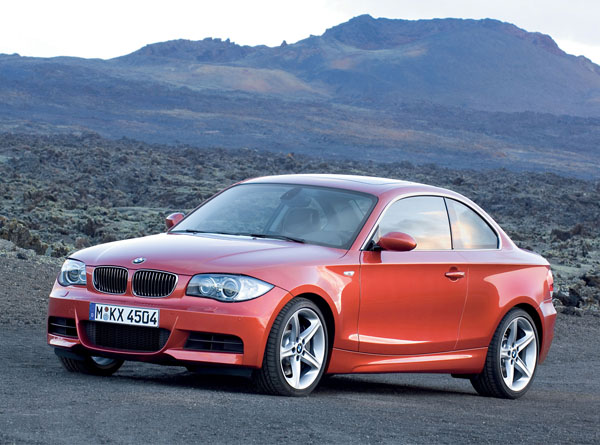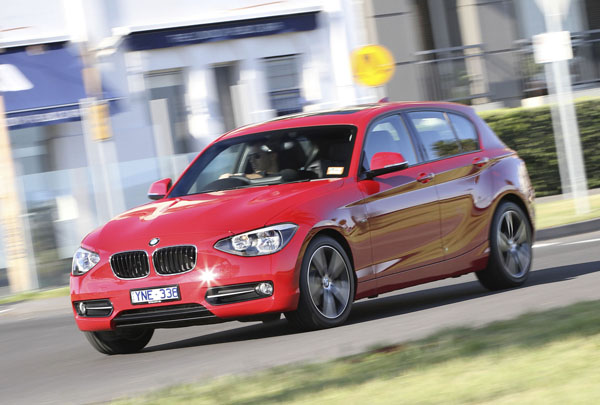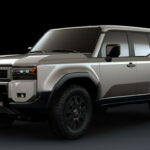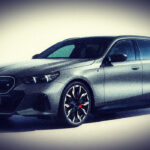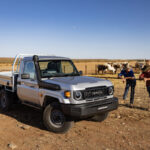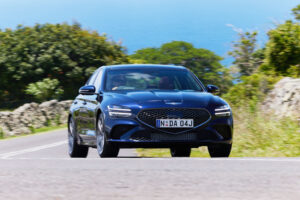All BMWs are aimed at those of us who love to drive, so the smallest vehicle in the range, the 1 Series uses sporty engines driving the rear wheels. Owners tell us that even heavy-duty commuting is more enjoyable than in other cars they tested before buying a 1 Series.
Rear-drive certainly gives the 1 Series excellent chassis balance and smile-to-the-face driving – but it steals cabin and boot. There’s good legroom in the front seats, though foot-width is restricted by the large gearbox housing. However, it’s probably better to regard a 1series as a two-plus-two rather than a four seater. Two adults and a couple of small children in the the most you can expect to carry in real life.
The second generation 1 Series, launched in January 2011 is slightly larger than the original. Do a side-by-side comparison on interior space to see if it suits your needs, and budget.
When launched here in October 2004, BMW 1 Series came only as a five-door hatch. BMW 1 Series’ styling in hatchback format gives it a tail end treatment that’s almost wagon like. A two-door coupe and a soft-top convertible were introduced in May 2008.
BMW 1 Series comes with a staggering choice of powerplants. In petrol format these range from 1.6-litre and four cylinders all the way to 3.0 litres with six cylinders. Some of the sixes have twin turbochargers, others don’t have a blower.
The twin-turbo petrol engine in the 135i is a superb unit, close to the BMW M3 in its performance.
BMW 1 Series M Coupe has even more power from its twin-turbo six than the standard turbo-petrol models, provides stunning acceleration. We feel it should have been called the M1 to join the M3 and M5 in the high-performance lineup. However, the M1 tag was used on a BMW supercar model in the late 1970s and the company chose not to reuse it.
Turbo-diesel engines became part of the BMW 1 Series lineup from May 2006. Though this seemed odd to Australian buyers at the time it was soon recognised that the grunt of the modern BMW diesels is great. However, they miss out on the virtually instantaneous response provided by non-turbo petrol powerplants so some aren’t keen on them. Try before you buy.
Manual gearboxes are five or six-speed manual, with the six-speeder being by far the more common. BMW manual gearboxes are a joy to use, with slick changes through the well-chosen ratios. This is another benefit of the use or rear-wheel drive as the gearbox is close to the gearlever.
Unless you’re stuck with heavy-duty commuting on a daily basis may we suggest going for the driving pleasure of the manual?
There was a six-speed automatic until October 2011 when an eight-speed auto was introduced in most models, though some diesels were still fitted with the old six-speeder.
Ideally a BMW should be serviced and repaired by an authorised dealer as these are cars with complex electronic components. The dealer will connect the car to a computer to assist in fault diagnosis, even connecting to the big computer in head office in Germany when required.
BMW is long established in Australia and there are dealers in all metropolitan areas and in major country centres. If you do travel into semi-remote areas you may have trouble finding either a dealer or a mechanic experienced on the marque.
A 1 Series with a written service record stretching back to day one will generally fetch a higher price on the used market. Smart buyers of second-hand models will keep up this record ad infinitum.
There are some mechanics with formal BMW training and who now operate as independent specialists. They generally have a high reputation. Ask around in your local area.
Insurance charges are high for a small car – but not too bad when you consider the complexity and quality of the BMW’s body.
Interestingly, BMW has finally admitted that front-drive is the way to go in small cars and new 2 Series models have just this feature. BMW’s experience with this type of driveline has built up substantially since taking control of the new Mini range. The 2 Series is still relatively rare on the used-car market, but we will cover it in a year or two.
WHAT TO LOOK FOR
Signs of crash repairs such as mismatched paint, paint overspray and ripples in the panels could mean the car’s had a hard life.
A magnet will tell you if the material under the repaired area is metal – or plastic filler used as a cheap alternative.
Hard driving can result in big buildups of brake dust near the calipers. Smart sellers will clear this away, not so bright ones may only clear the dust from easy areas, but forget to get rid of the dust inside the backs of the wheels.
Uneven front tyre wear is another sign of hard driving, as are signs of wear a long way down the sides of the tyres.
Engine should start within moments of turning the key. Preferably arrange to do this with the engine cold after an overnight stop.
During your test drive feel for any hesitation under acceleration and look for oily smoke from the exhaust when the engine is worked hard.
Make sure manual gearchanges are quiet and slick. Fast changes from third to second gears are usually the first to show problems.
Automatic changes should be all but unnoticed unless you’re driving pretty hard. Check the manual override systems work correctly.
CAR BUYING TIP
Enthusiasts’ cars often get driven hard – so be careful…




